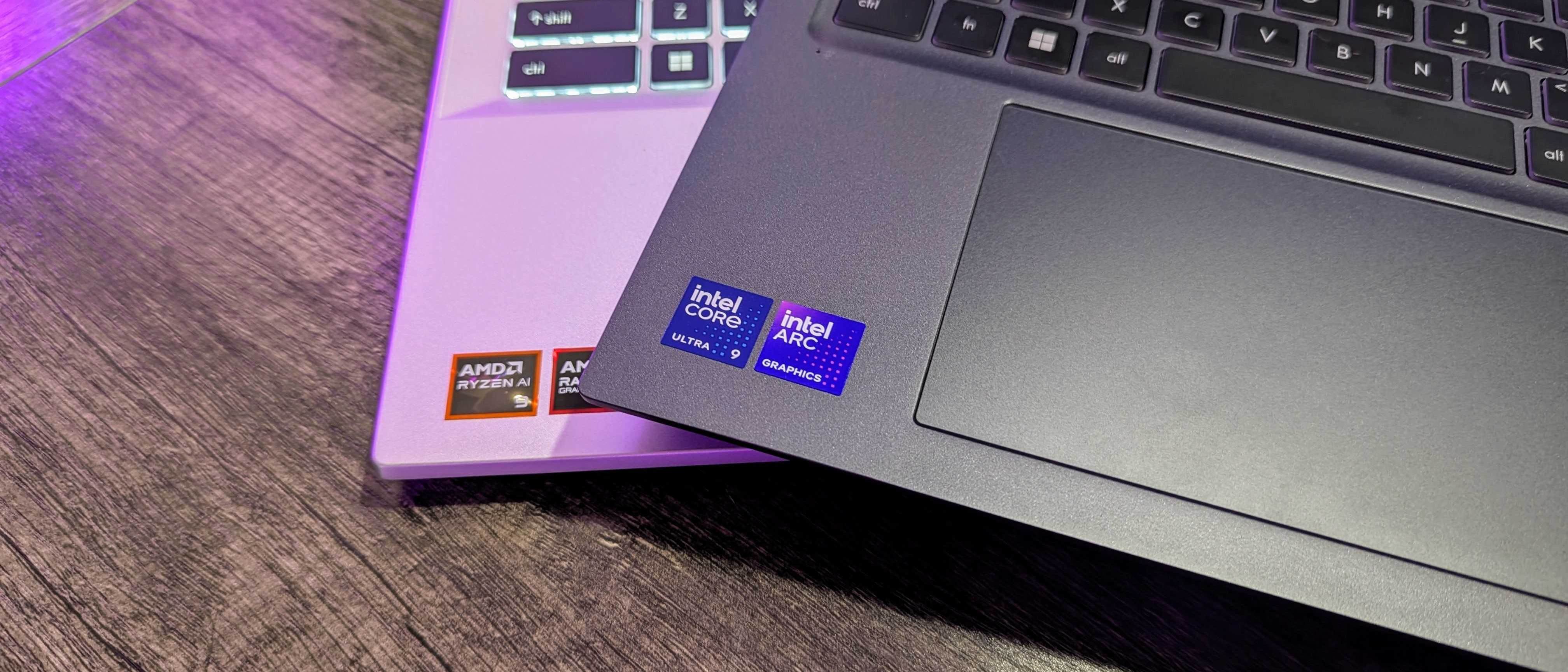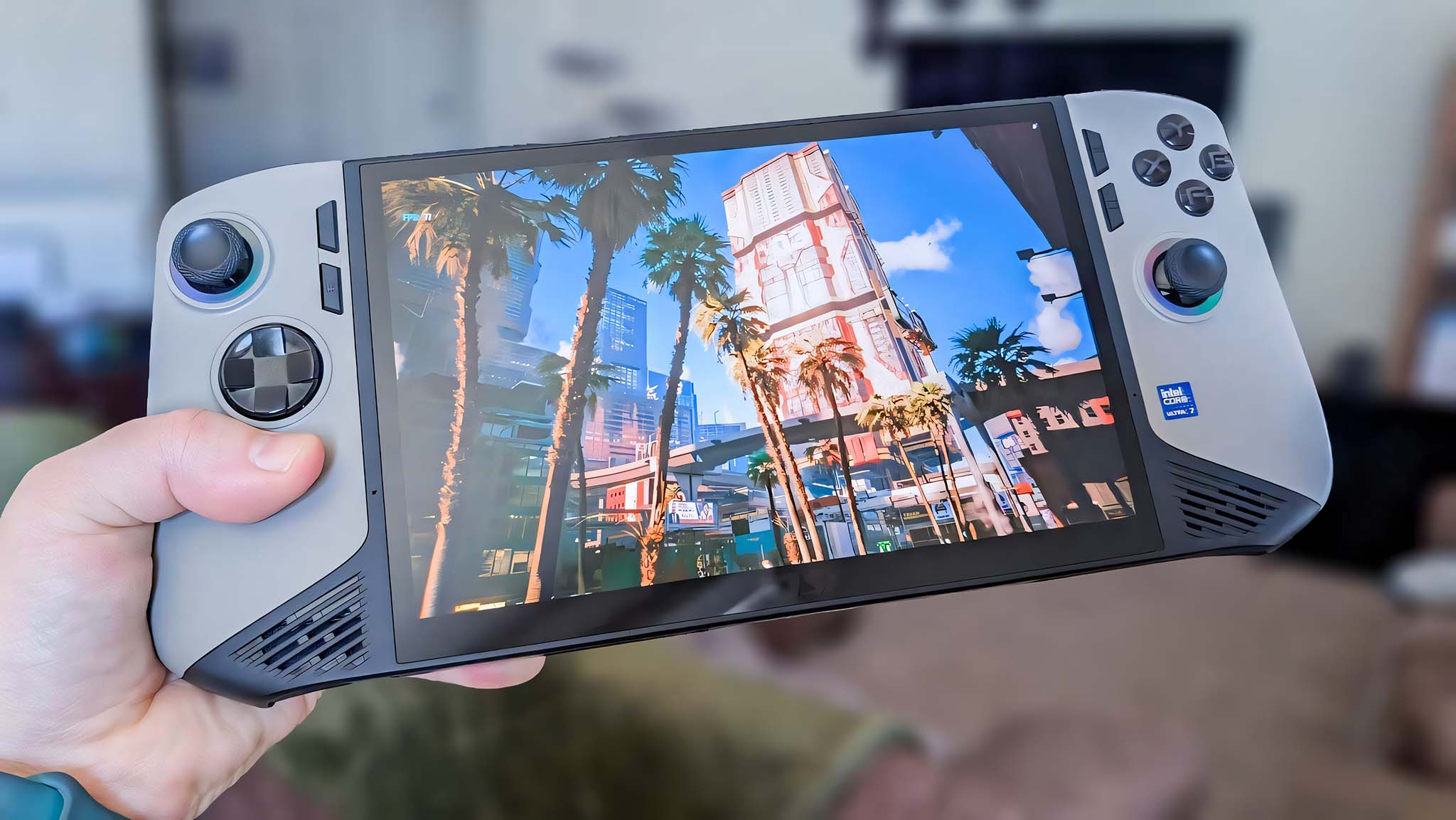Windows Central Verdict
Intel has refreshed its H and HX-series mobile processors with Intel Core Ultra (Series 2), and the results are interesting. The Intel Core Ultra 9 285H I had an opportunity to test is powerful and efficient, with a surprisingly capable integrated GPU. However, no laptop running these new chips will be Copilot+ PCs thanks to a strangely weak NPU, which gives AMD's Ryzen AI series room to flourish.
Pros
- +
Strong single and multi-core performance
- +
Capable integrated GPU that punches above its weight
- +
Efficient and performant on and off the charger
Cons
- -
Weak NPU that disqualifies Copilot+ PC status
- -
AMD Ryzen AI still puts up strong competition in this category
Why you can trust Windows Central
Personal computers have been rapidly evolving over the last few years, largely due to increased competition in the silicon space between AMD, Qualcomm, NVIDIA, and industry leader Intel.
Intel's complacency in the past gave its opposition space to expand, but now the company is firing back with the aggressively updated Intel Core Ultra family. We've been impressed by the latest Intel chips in thin-and-light ultrabooks, but Intel Core Ultra (Series 2) is finally coming to more powerful laptops, workstations, and gaming machines. Intel and MSI sent me one of the first laptops to rock the new Intel Core Ultra 9 285H to try it out.
After all my testing, I'm confident that few are going to be disappointed by the new H and HX-series Intel Core Ultra processors. This CPU, at least, is both powerful and efficient whether you're plugged in or not, and its integrated GPU makes gaming possible even without more expensive hardware. I'm just confused by Intel's approach to AI with its more expensive, higher-end chips, especially when both AMD and Qualcomm seem to have the right idea. It'll be interesting to see how this pans out.

I've used, tested, and reviewed laptops, tablets, desktops, and other devices powered by hardware from Intel, AMD, Qualcomm, and NVIDIA. I keep myself up to date on all the happenings in the industry so I can pass on that expertise to you and help you decide what should power your next computer.
Disclaimer
This review was made possible thanks to review samples provided by Intel. Intel and MSI had no input nor saw the contents of this review prior to publication.
Intel Core Ultra 9 285H review: What is it?
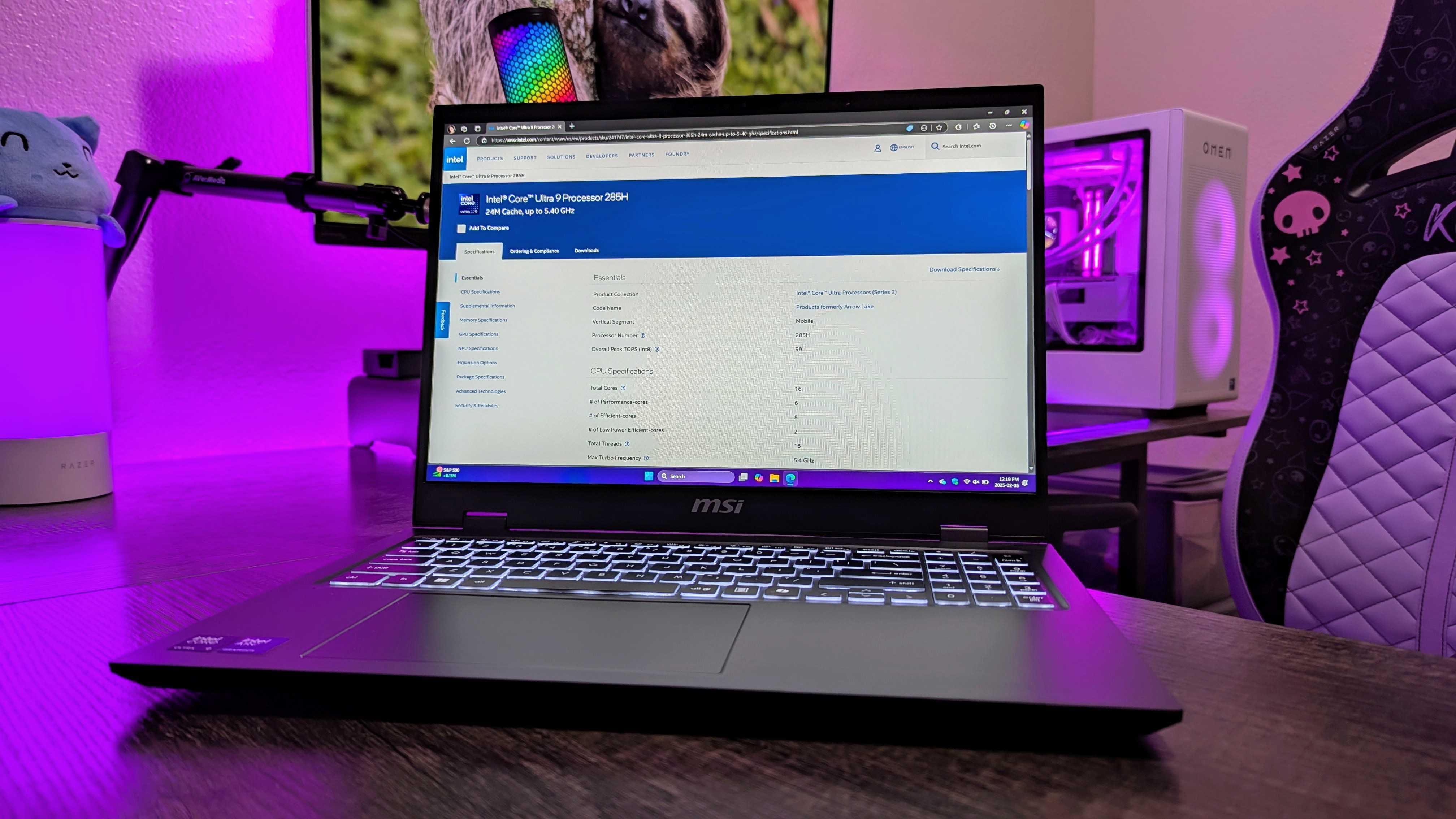
- The Core Ultra 9 285H is the flagship in Intel's new H-series line.
- It's a 16-core processor meant for more powerful laptops and workstations.
Intel Core Ultra (Series 2) debuted with the V-series, which we've already seen plenty of in premium thin-and-light devices like the HP OmniBook Ultra Flip 14 (2024) I reviewed. Series 2 also marked Intel Core Ultra's debut on desktops with the powerful K-series. Now, Intel is massively expanding the lineup with the affordable U-series, powerful H-series, and top-tier HX-series mobile chips, as well as the more affordable T-series on desktops.
That's a lot of series and a lot of SKUs in each series to make the whole mess more confusing. What you need to know about the Intel Core Ultra 9 285H and its less impressive Ultra 7 and Ultra 5 siblings is that they're designed for laptops that demand greater performance than the V-series can offer. Expect to see the H-series in creator-focused laptops, enterprise workstations, and even compact gaming laptops. This family can stand on its own, but Intel designed it and the HX-series with discrete graphics in mind.
The Intel Core Ultra 9 285H is a Central Processing Unit (CPU) that boasts 16 cores (and 16 threads) split between 6 performance cores, 8 efficiency cores, and 2 low-power efficiency cores. You're looking at a base frequency of 1-2.9GHz, with Intel Turbo Boost technology supporting max frequences of 2.5-5.4GHz. Supporting the CPU is a 24MB cache, as well as an Intel Arc 140T integrated Graphics Processing Unit (GPU) with 8 Xe2 graphics cores and an Intel AI Boost Neural Processing Unit (NPU) with up to 13 TOPS of AI computational power. As a system, the Core Ultra 9 285H draws 35-45W of power, with a peak of 115W when turbo boosting.
If any of that sounds unfamiliar to you, don't worry — keep reading for the real-world reasons you should or shouldn't consider a laptop powered by this chipset.
Intel Core Ultra 9 285H review: The good
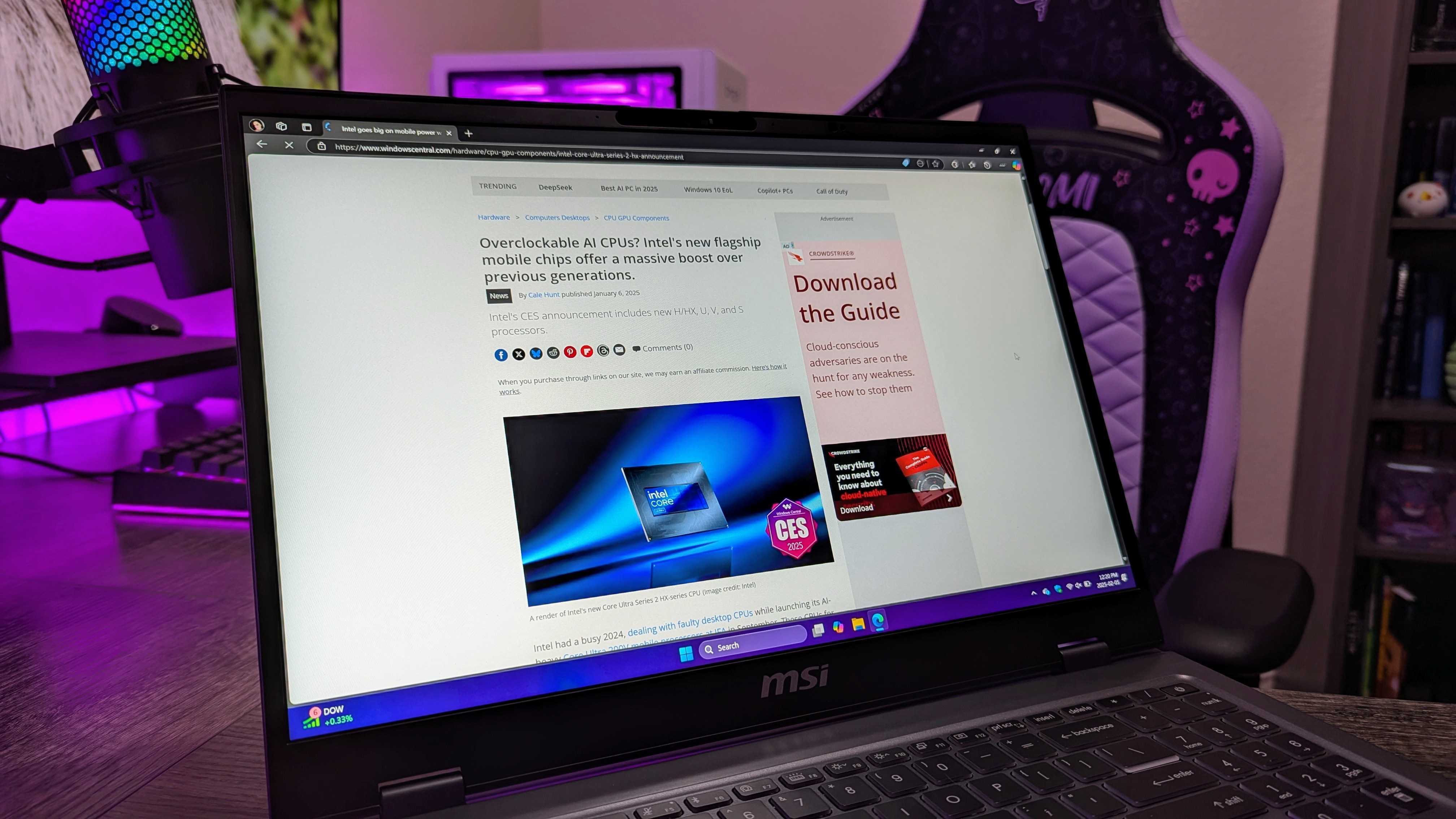
- The Core Ultra 9 285H is a reliable performer with everyday computing.
- It also boasts one of the best integrated GPUs we've tested.
- Efficiency seems to be solid, with casual computing sipping power.
In order to test the Intel Core Ultra 9 285H, Intel sent me an MSI Prestige 16 AI Evo (B2HMG) sample, as well as an MSI Prestige A16 AI+ (A3HMG) powered by an AMD Ryzen AI 9 365 for comparisons' sake. I'm not entirely sold on Intel positioning the Ryzen AI 9 365 as this chipset's direct competitor, though; it seems a bit odd to take aim with a 16-core CPU at a 10-core CPU that has been competing with Intel's 8-core V-series chips up until this point.
I'd argue that the AMD Ryzen AI 9 HX 375 inside laptops like the HP OmniBook Ultra 14 (2024) that I reviewed is a more appropriate comparison, even if Intel would rather we compare its HX-series to that chip. Sharing the "HX" moniker isn't enough to be rivals, though, especially when AMD just announced more powerful Ryzen AI MAX chips that compete more directly with Intel's new HX-series offerings. On top of that, these two MSI Prestige laptops differ far more than just their processor of choice. Different designs, displays, thermal management systems, components, and more make it difficult to take any one-to-one comparisons at face value.
While we're on the topic, though, let's go ahead and get those comparisons out of the way.
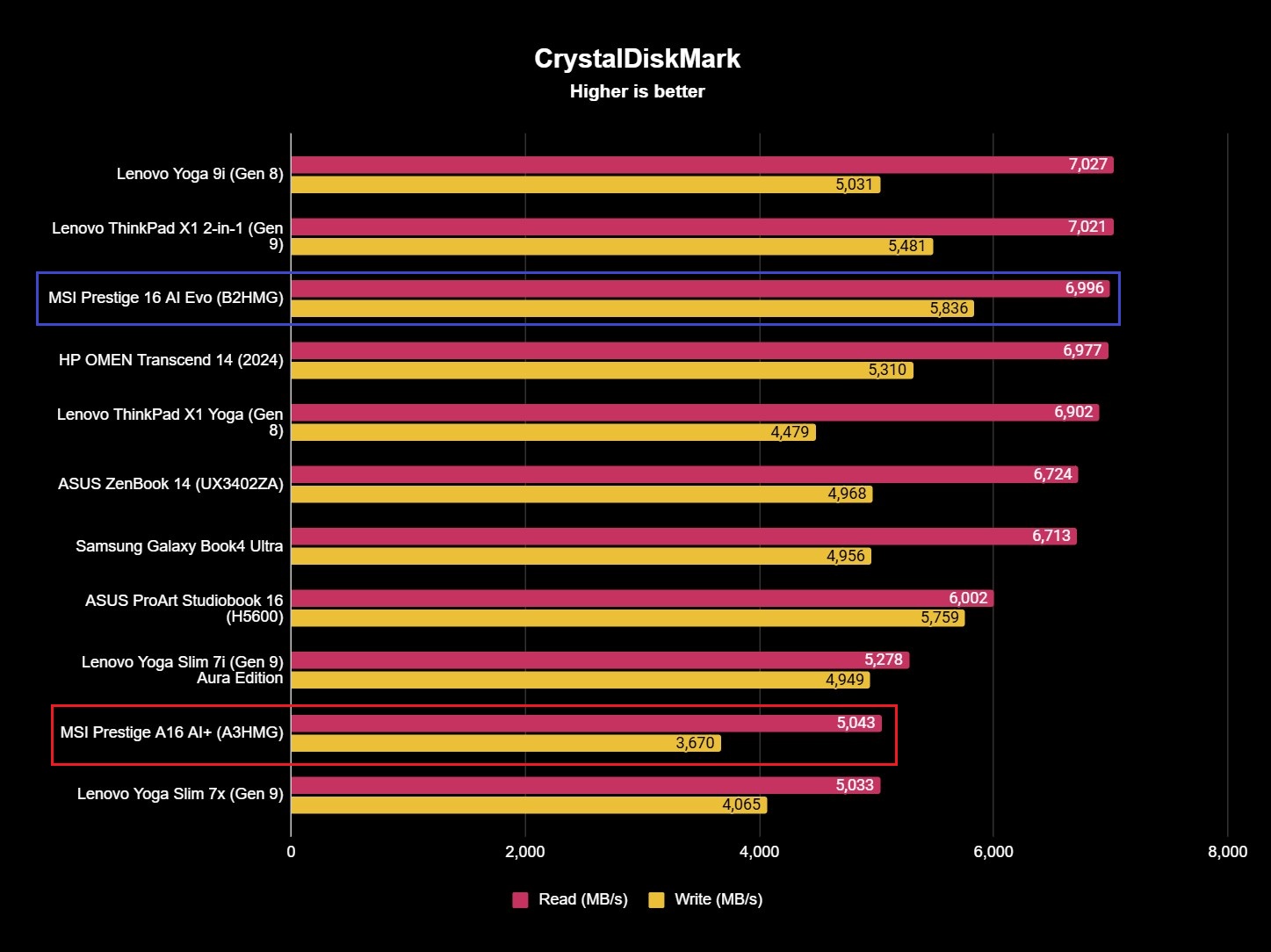
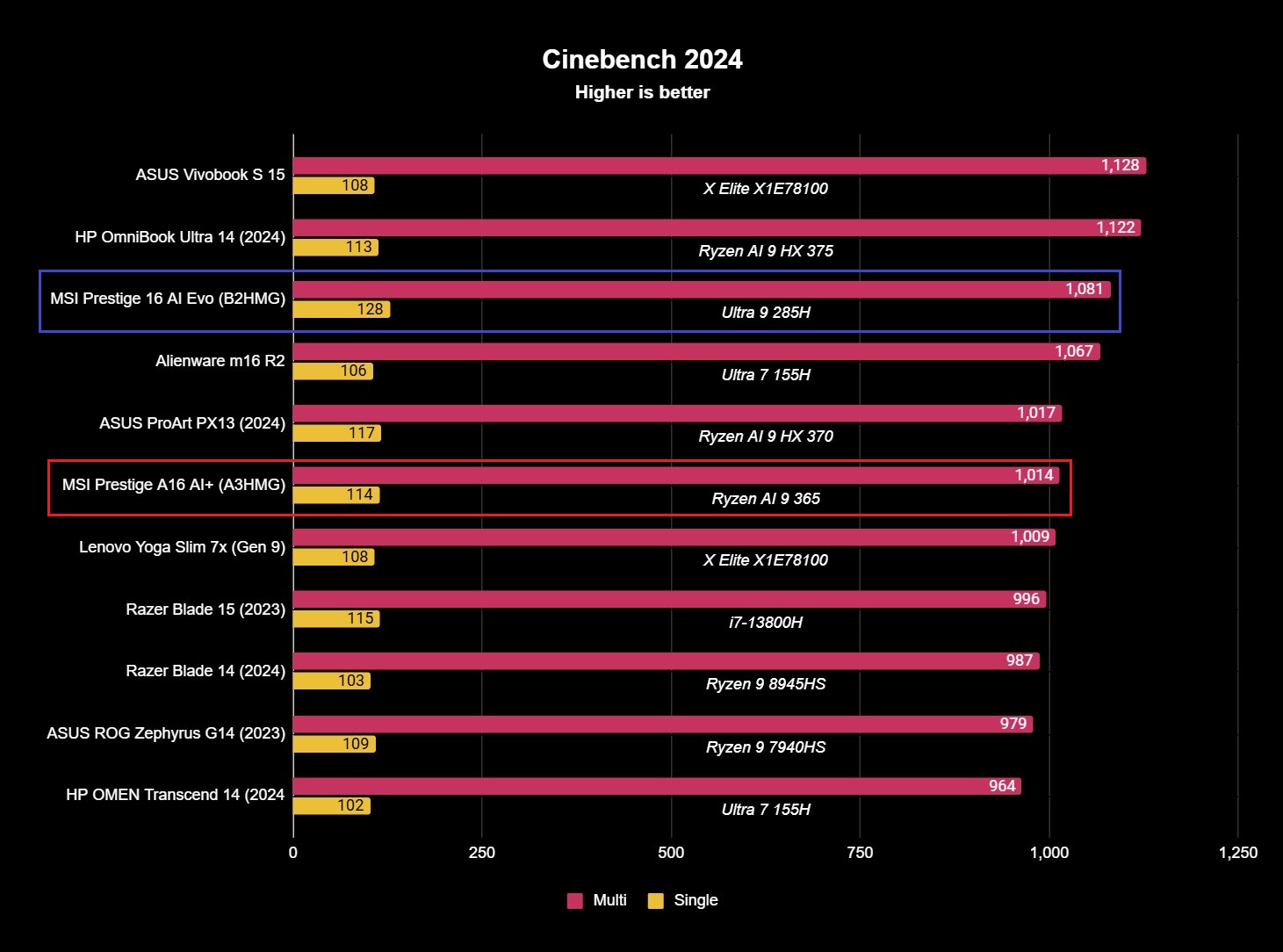
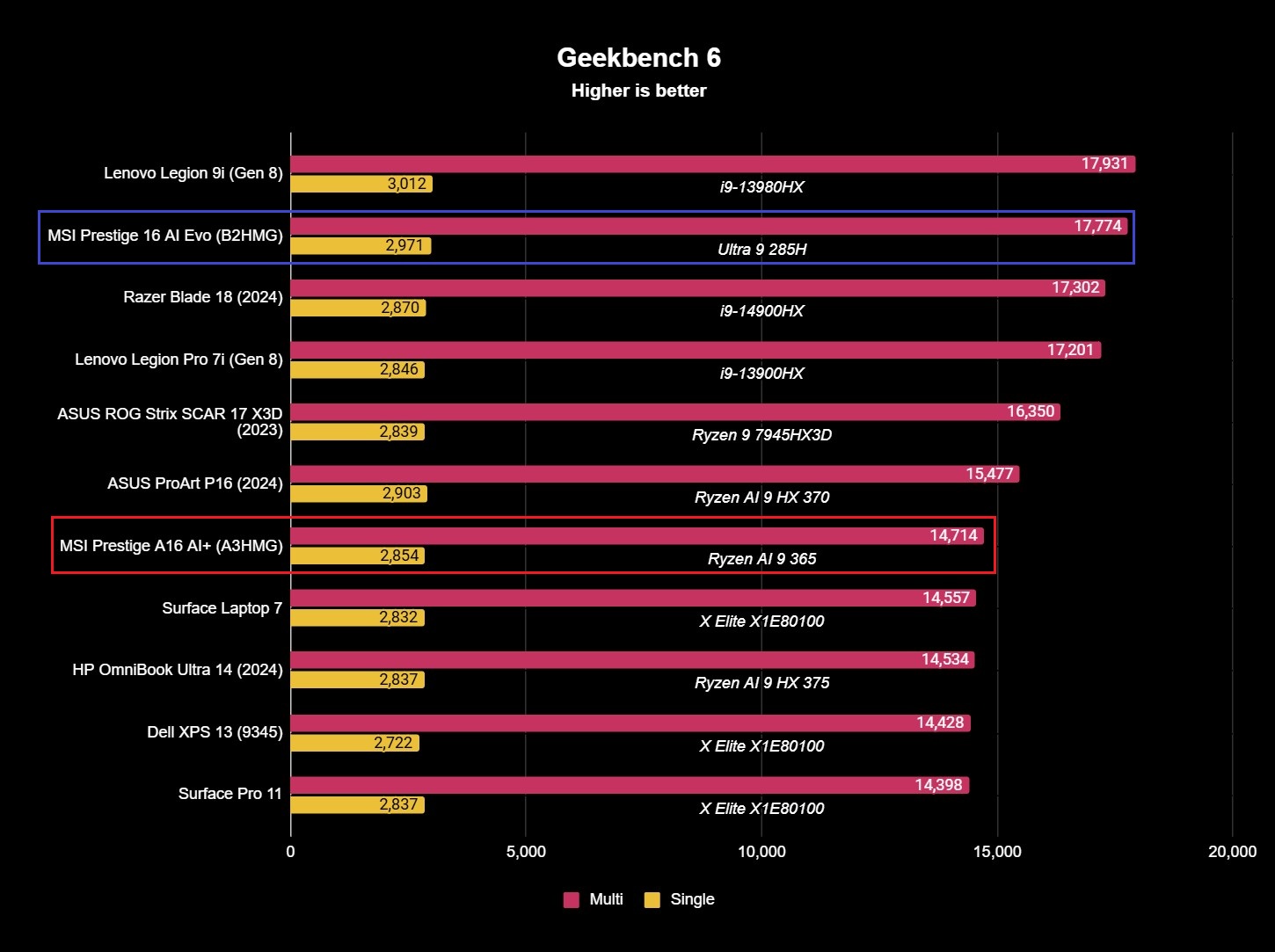
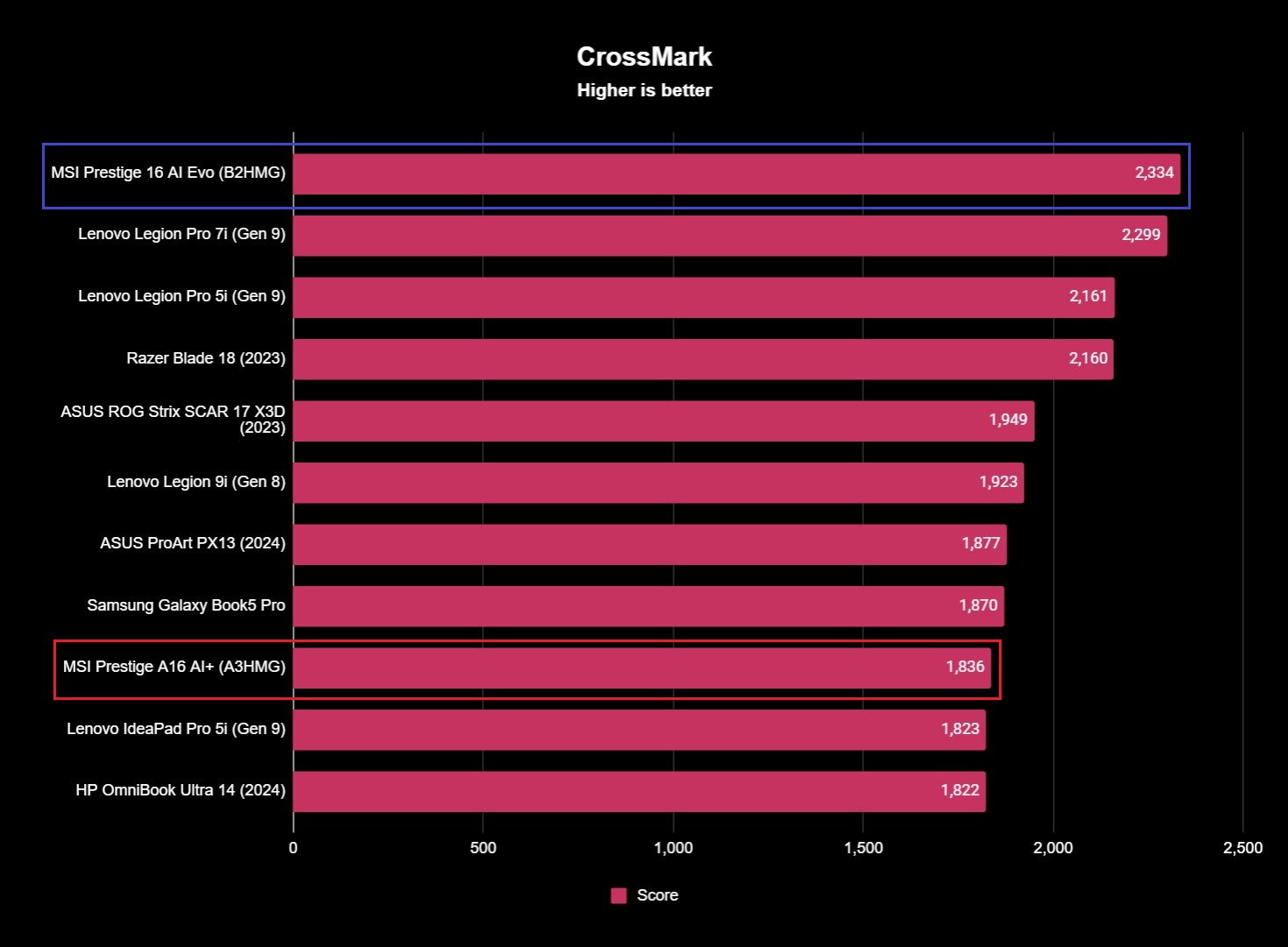
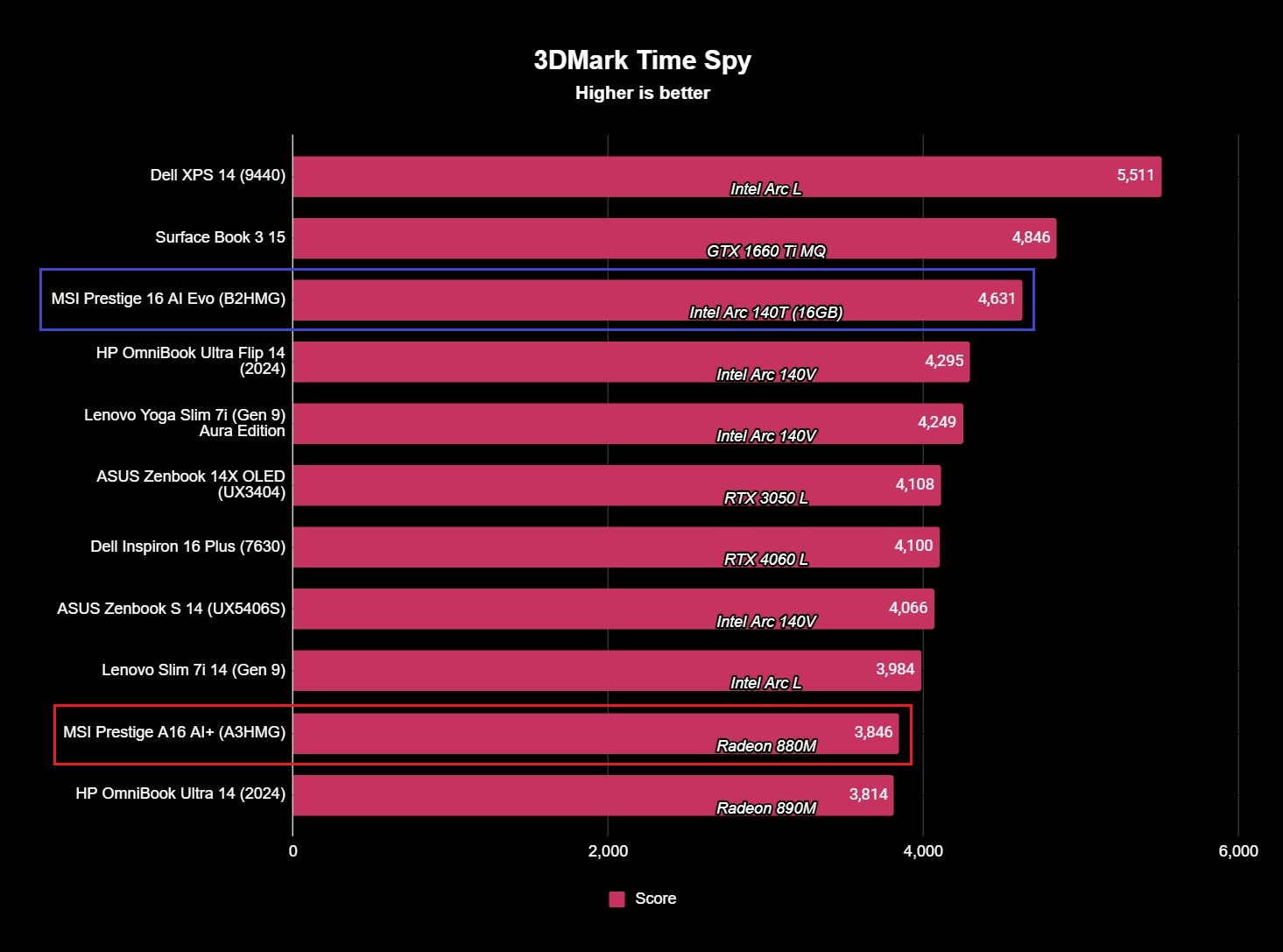
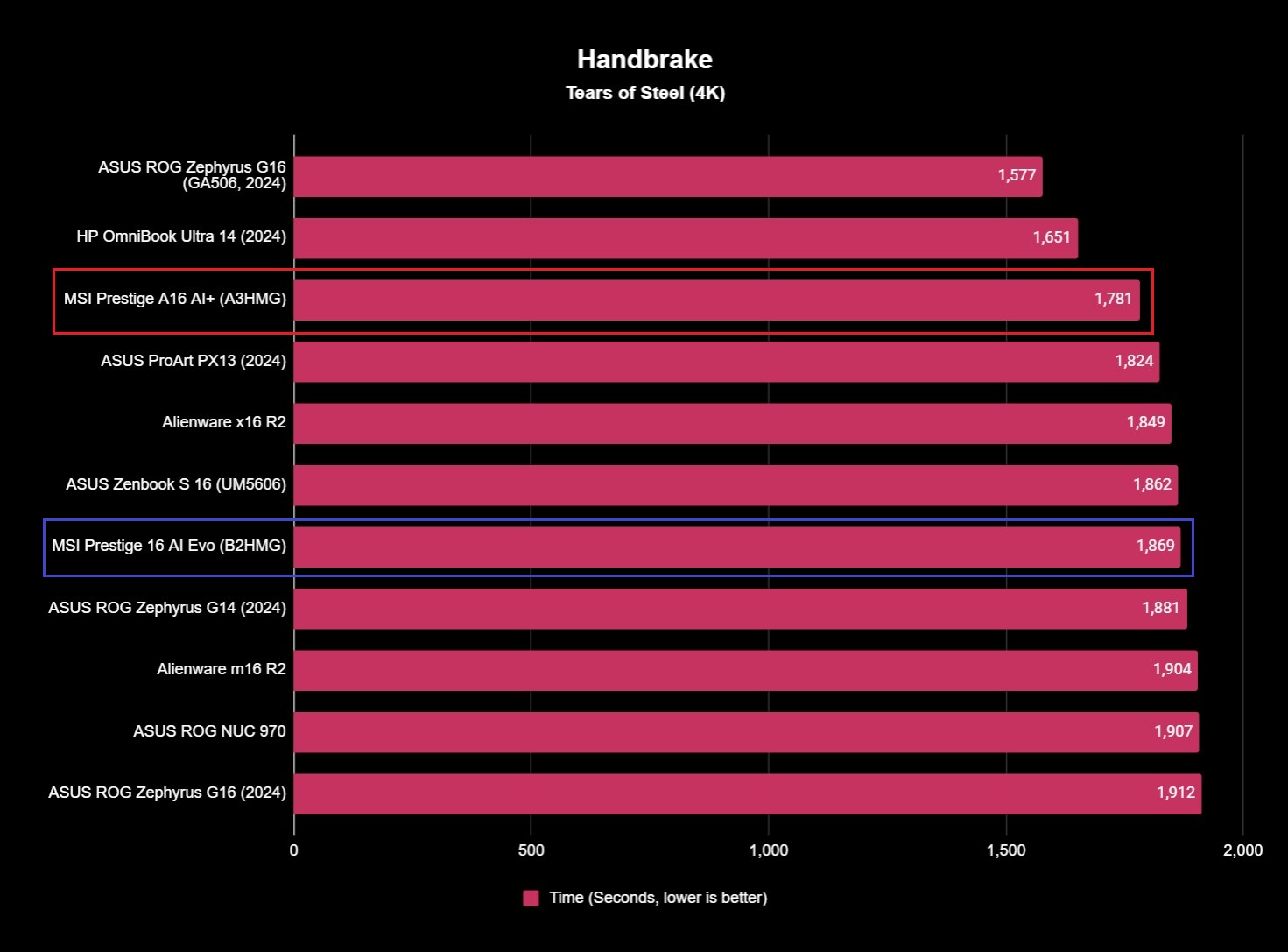
Benchmarks tell only a fraction of the complete story, but these graphs can give you a quick idea of where these chips stand in relation to each other. Sure enough, the Intel Core Ultra 9 285H is stronger and faster than the AMD Ryzen AI 9 365... In everything but encoding a 4K video in the H.265 mkv format (where we often see AMD beat out similarly specced Intel devices).
Some of these results are likely influenced by the AMD-powered laptop running a significantly slower SSD (and other potential differences in its hardware), but overall, the Core Ultra 9 285H makes a strong showing. That's especially true in single-core performance, which is incredibly important for day-to-day smoothness and can impact efficiency. Having so many cores obviously helps the Core Ultra 9 285H keep up with even last-gen gaming laptops running HX-series chips on multi-core performance, too.
Despite boasting 6 fewer cores, though, the Ryzen AI 9 365 is never far behind. The biggest deficit is in the Geekbench 6 multi-core test, where AMD's offering drops 17% in comparison to Intel. The new H-series flagship isn't leaping past AMD's offerings, but the Core Ultra 9 285H stays competitive with the best on the market currently and doesn't have any glaring weaknesses. Synthetic testing is done, and Intel is off to a solid (if not exceptional) start.
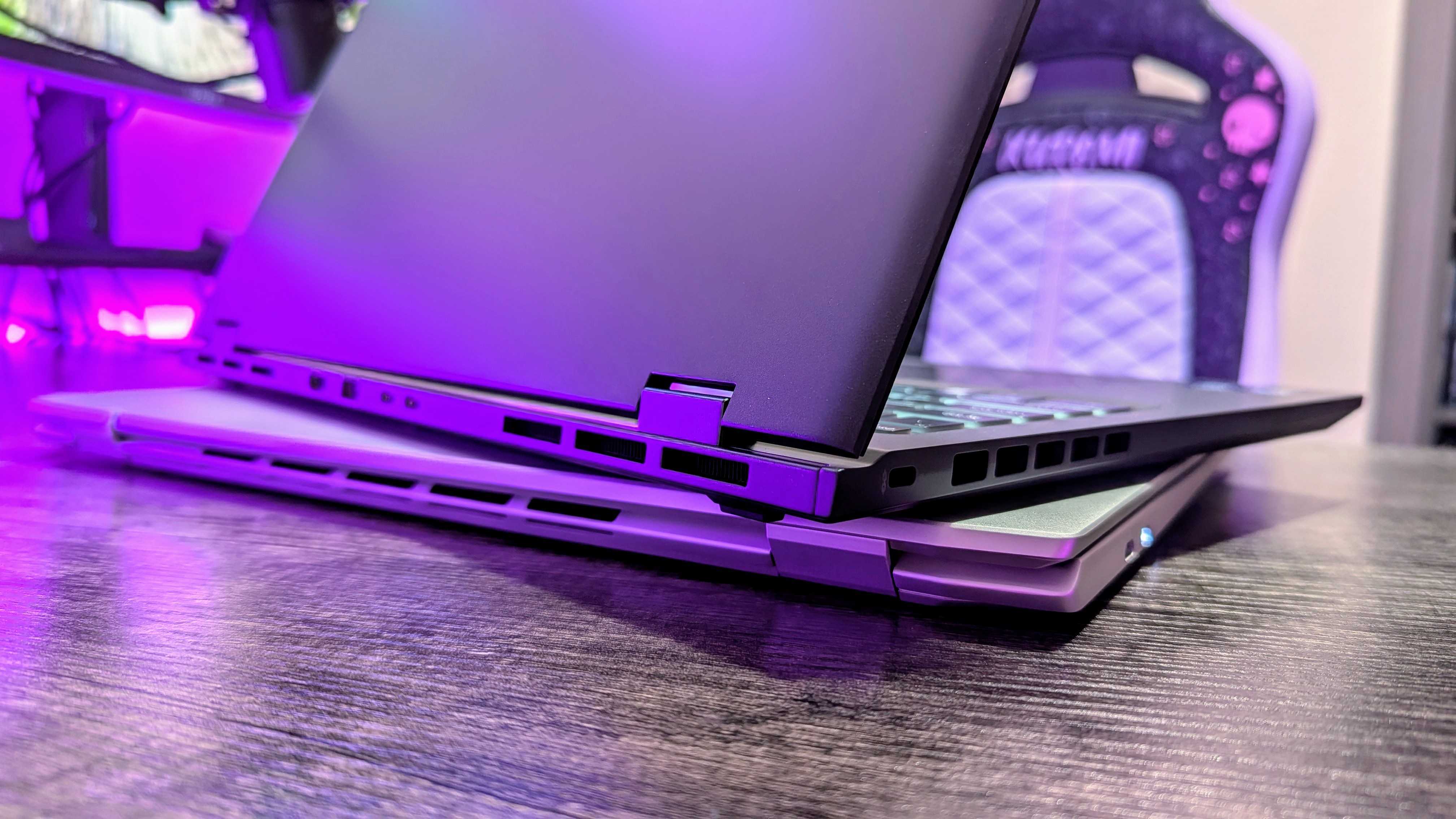
So, how does the Intel Core Ultra 9 285H fare when you're actually using your laptop? Really good, honestly. Exceptional single-core performance helps make day-to-day operation as smooth as silk. Zipping around Windows 11, browsing the web, and using Microsoft Office — I never had any complaints, and this MSI Prestige 16 has done a fair job staying cool and silent during casual usage. Booting up, waking from sleep, and logging in via Windows Hello has also been fast and seamless.
Push the hardware further, and the Intel Core Ultra 9 285H can get very hot... But not so hot that I couldn't touch the MSI Prestige 16. It also never noticeably slowed down, no matter what I did, and it's no slouch when it comes to multi-core performance. By far, the most impressive part of this chipset — and the only category in which it definitively steps ahead of AMD and Qualcomm — is the performance of its integrated GPU.
- Forza Horizon 5 — 47 FPS (High preset, 1200p resolution, 60Hz refresh rate, v-sync enabled, Intel XeSS disabled)
- Gears 5 — 51 FPS (High preset, 1200p resolution, 60Hz refresh rate, v-sync enabled)
- Call of Duty: Black Ops 6 — 52 FPS (Minimum preset, 1200p resolution, 60Hz refresh rate, v-sync enabled, Intel XeSS enabled)
If I had lowered some settings, it would've been pretty easy to achieve a stable 60 frames-per-second in both Forza Horizon 5 and Gears 5. It wouldn't have been the prettiest, but the Intel Core Ultra 9 285H's GPU competes with the best gaming handhelds on this front. I also tested how well the Core Ultra 9 285H manages its performance over time by looping 3DMark's Time Spy benchmark 25 consecutive times, and it managed a framerate stability of 99.5%. That's a great score.
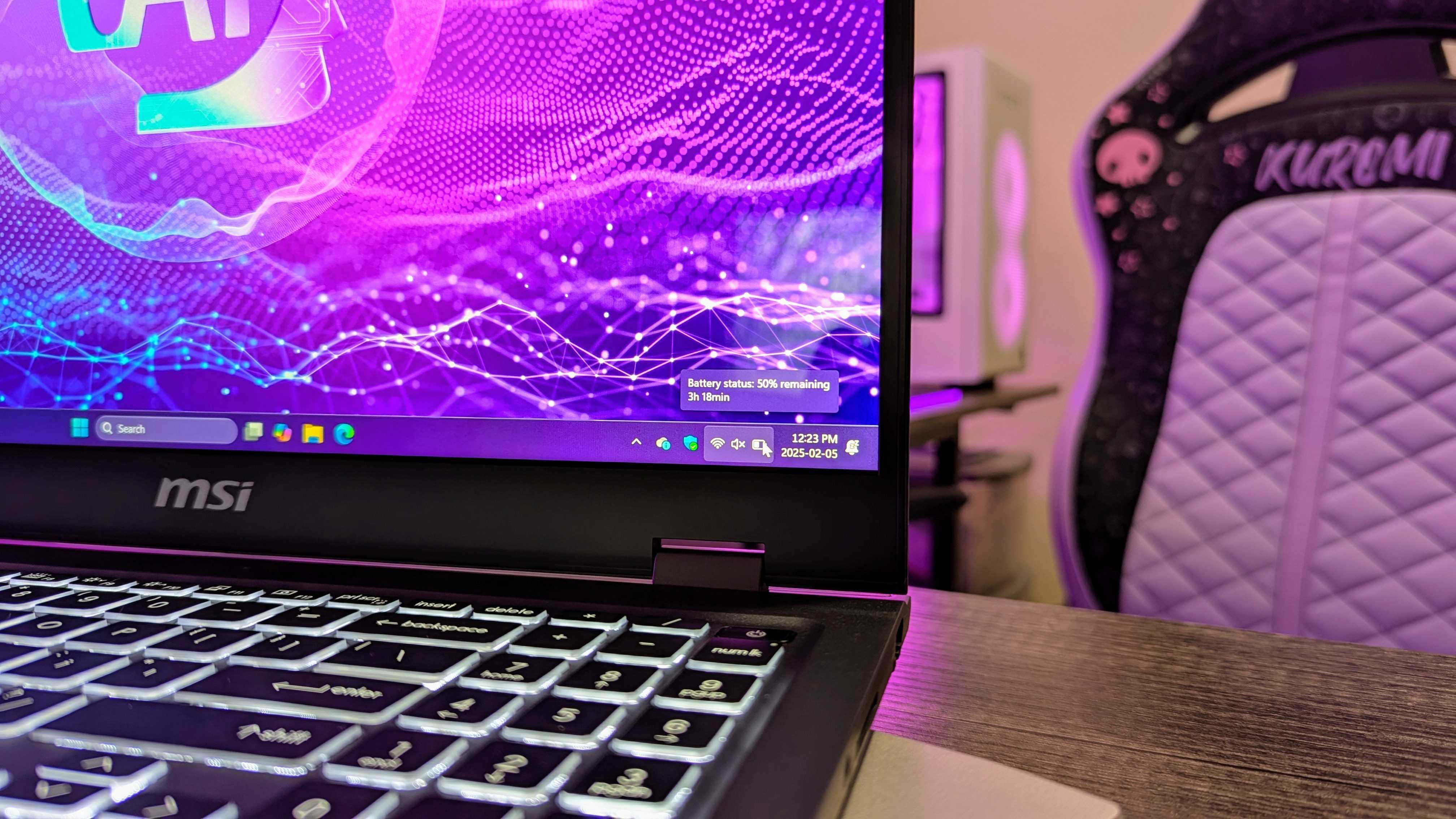
Finally, there's efficiency — Intel has made some big claims about how efficient it has made its Core Ultra (Series 2) platform. A 45W, 16-core x86 processor may not instill confidence on paper, but the Core Ultra 9 285H really is more efficient than I expected. I set the laptop to the "Balanced" performance profile and 200nits screen brightness, then ran it through Procyon's one-hour battery consumption benchmark. An hour of looping a standard Microsoft Office workload only drained 4% of the battery, and an hour of looping an HD video at 50% volume drained 6%.
I won't bother comparing that efficiency to the MSI Prestige A16 and its AMD chip, though, because that laptop doesn't behave the way I expect. Under the same conditions, the Ryzen AI 9 365 drained 10% in both tests... Except that doesn't quite track because the ASUS ProArt P16 (2024) that I reviewed also drained around 10% in this test — and that's with the Ryzen AI 9 HX 370, a 4K OLED display, and an active NVIDIA GeForce RTX 4070 discrete GPU.
What I can compare is performance off the charger. Past mobile chipsets have been criticized (especially on the AMD side) for excessive throttling on battery power, while the Qualcomm Snapdragon X series maintains nearly identical performance regardless of its charging state.
Recent Intel and AMD chipsets don't struggle with this, and the Intel Core Ultra 9 285H is no exception. Single-core CPU performance, in general, remained unchanged on and off the charger, while multi-core and GPU performance took small hits but not enough to be noticed in actual usage. The story is the same for the AMD Ryzen AI 9 365-powered laptop, but the gaps are a little smaller, so AMD does actually win this fight.
Intel Core Ultra 9 285H review: The bad
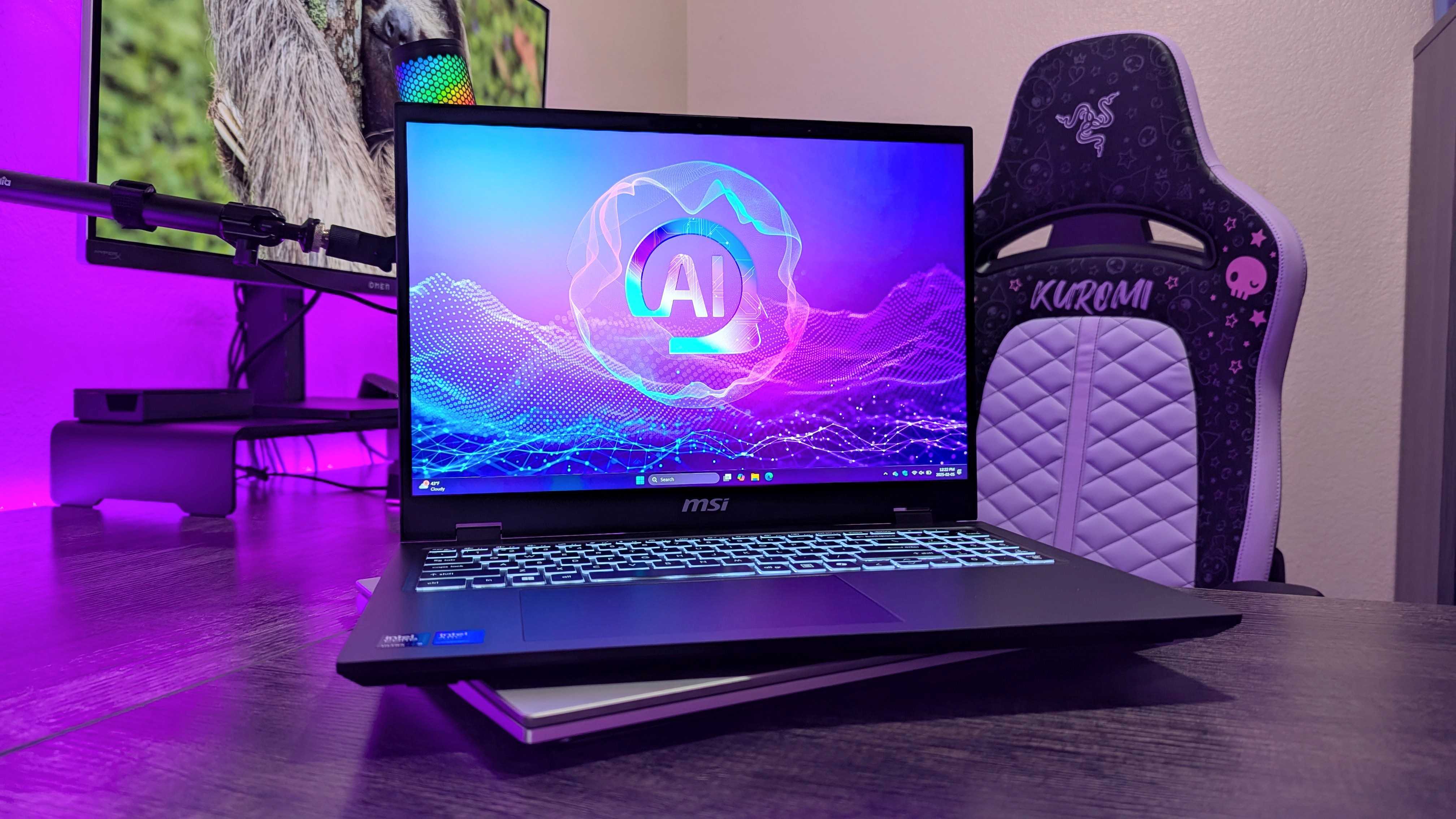
- The entire H and HX-series looks odd when placed above the V-series.
- That's because these chipsets' NPUS aren't Copilot+ PC compatible.
- This odd move leaves AMD especially a lot of room to maneuver.
I was there when Intel announced the new H and HX-series Intel Core Ultra processors. During the keynote, Intel brought on a Microsoft executive to talk about Copilot+ PCs and how important Intel is to the AI revolution occurring within the PC market, then promptly stopped mentioning Microsoft's flagship AI platform the moment it began announcing new chipsets. Oh, Intel made sure to talk about AI a lot with Intel Core Ultra H and HX-series, including mentioning the addition of an NPU, but it was all about platform AI computational power.
I mention this because not a single laptop running an Intel Core Ultra H or HX-series chip will be a Copilot+ PC, and that's because the Core Ultra 9 285H and all its siblings are limited to a 13 TOPS NPU. To put that into perspective, being a Copilot+ PC on the cutting edge of all Microsoft's AI investments in Windows requires an NPU with 40 or more TOPS of AI computational power. Right now, that includes Intel's Core Ultra V-series... the entire Qualcomm Snapdragon X series, and the AMD Ryzen AI series. Yes, that includes the new ultra-affordable Snapdragon X and AMD's most budget-friendly chips like the Ryzen AI 5 340.
For Intel to announce two premium series for more powerful and specialized laptops that flat-out can't support Windows 11's best AI features moving forward is wild. Don't get me wrong, the Core Ultra 9 285H can still handle AI tasks just fine with its GPU, and laptops with discrete GPUs will have even fewer problems, but the point of an NPU is to be able to handle smaller or background AI tasks far more efficiently than any GPU ever could. Either way, when it comes to how artificial intelligence actually matters to regular people on their laptops, "platform TOPS" means nothing — because you're not going to be using the entire platform for solely AI tasks.
The fact of the matter is that AMD and Qualcomm are scaling superior AI capabilities to more price ranges, while Intel is restricting its Copilot+ PC-capable NPU to only the premium, efficient V-series at the moment. I may not personally care much about AI PCs, but I can't begin to claim that it's not incredibly important now, and even more so moving forward. It's a baffling move from Intel, and it gives AMD especially a lot of opportunity with its expanding Ryzen AI lineup.
Intel Core Ultra 9 285H review: Final thoughts
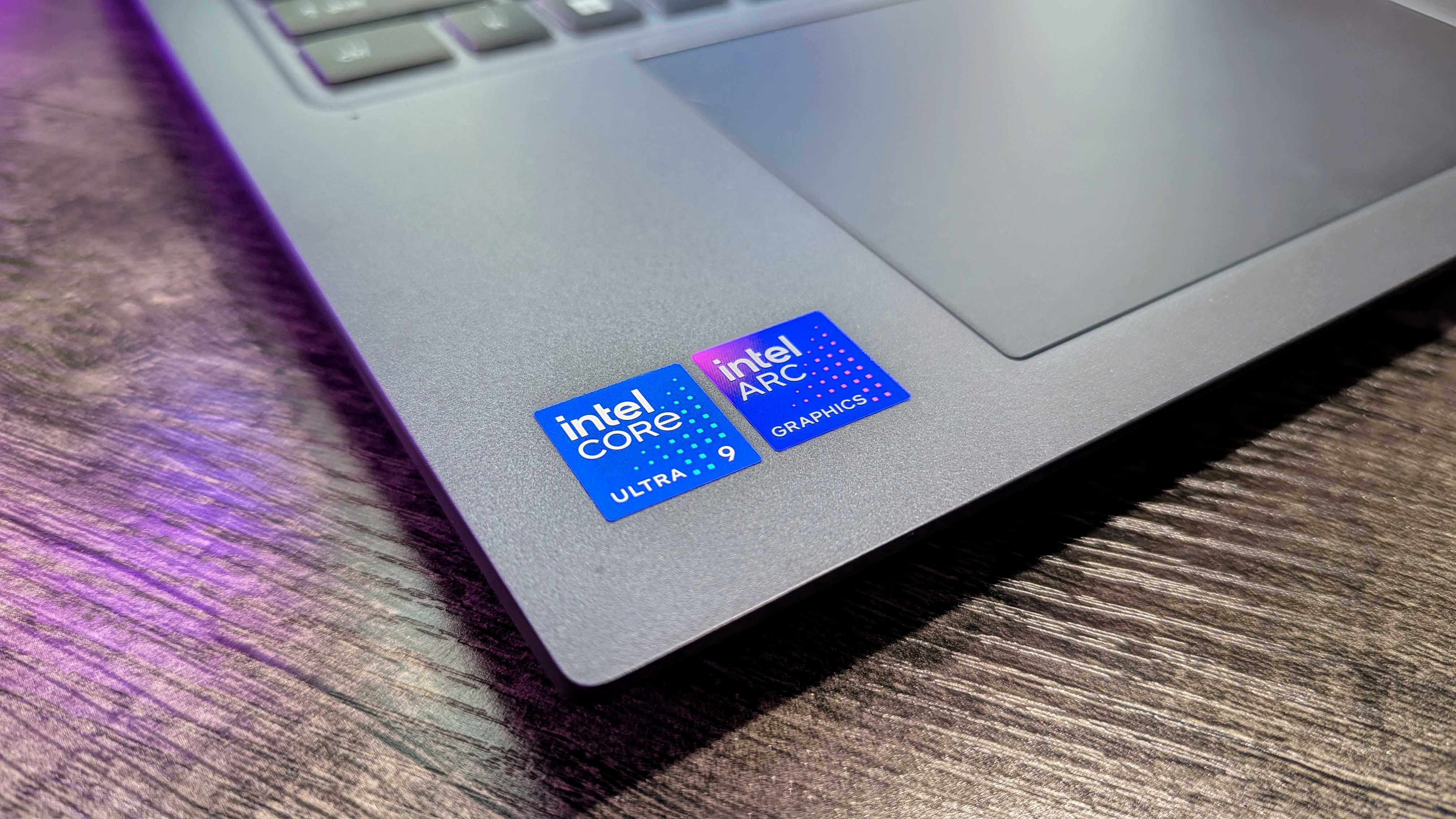
You should consider this if ...
✅You specifically want an Intel-powered laptop
Look, I get it. At some point, it's simply tribalism, but many of us do have legitimate preferences with our technology and trust certain companies over others. AMD has been winning me over, but this is a fine Intel platform that, at the end of the day, gets the job done.
✅You want the best integrated GPU you can get
We don't know just how good AMD's Ryzen AI MAX platform will be, but right now, the new H and HX-series Intel Core Ultra chips boast the most powerful integrated GPU you're going to find anywhere. If you want efficient graphical prowess, this is a good place to start.
You should not consider this if ...
❌You want a laptop future-proofed for AI
I've no doubt the Intel Core Ultra 9 285H will run fantastically for years, but it's behind the times right now when it comes to supporting the latest and greatest AI features in Windows. If you want to stay on that cutting edge, only AMD can really help you in this category of device.
It's strange reviewing a mobile processor because you can't actually go out and buy the Intel Core Ultra 9 285H and shove it into the laptop of your dreams. If you're looking for specific information to help inform your next laptop purchasing decision, though, Intel hasn't taken back its dominance with the H and HX-series Intel Core Ultra chips, but it is (mostly) keeping up.
That caveat is because Intel can claim that the Intel Core Ultra 9 285H is designed with AI in mind as much as it wants, but it will never be inside a Copilot+ PC. There's no good reason for that, especially since the most expensive Intel-powered laptops are going to be those powered by these beefier, core-heavy chips. With AMD Ryzen AI impressing so much on nearly every front and Qualcomm continuing to push its ultra-efficient silicon into lower price ranges, I fear Intel may struggle to keep up if it doesn't inject some consistency into its product ranges.
If you're not concerned in the slightest about AI, though, don't worry about any of that. The Intel Core Ultra 9 285H is a very capable performer with an especially impressive iGPU, and it won't smash your battery to pieces to achieve that performance.
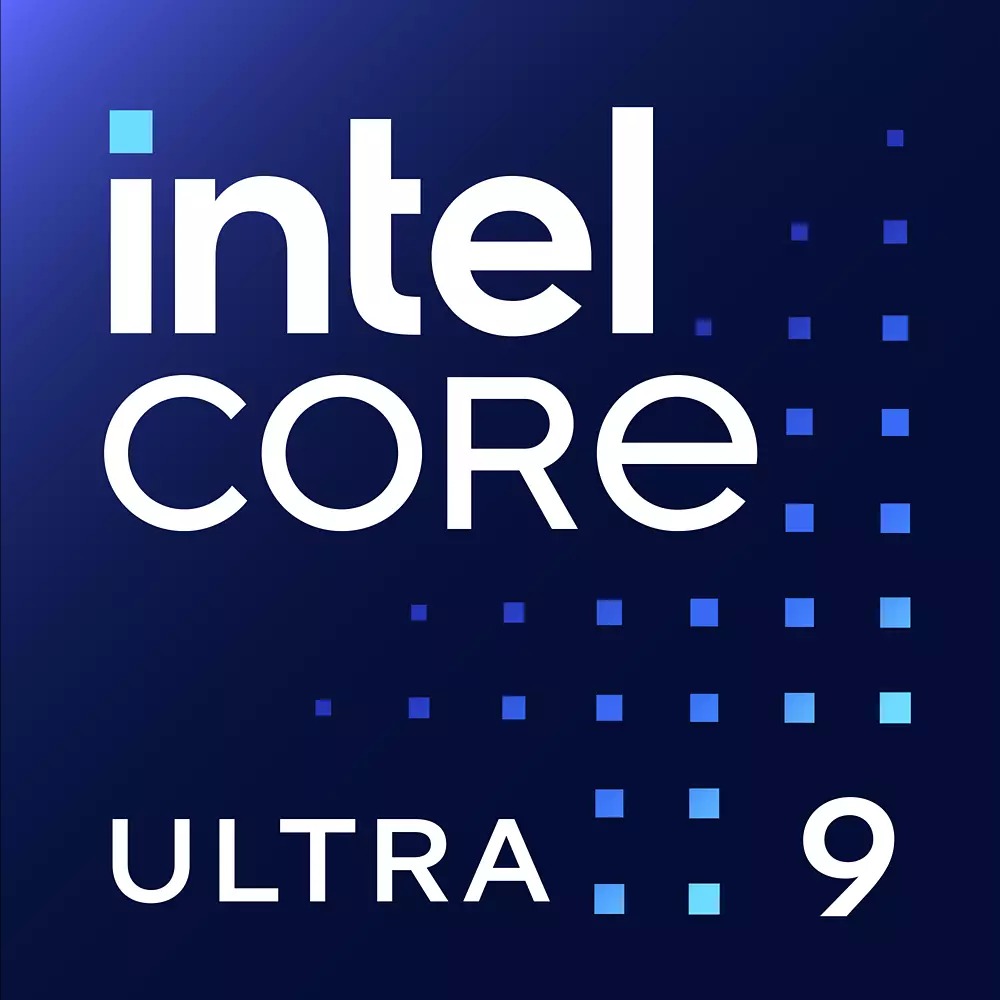
There are no buy links here, but the Intel Core Ultra 9 285H could be the chipset you want inside your next laptop. Just keep in mind its inherent limitations when it comes to AI, where AMD is establishing a strong foothold thanks to its Ryzen AI investments. Outside of that, this is a performant, efficient platform.

Zachary Boddy (They / Them) is a Staff Writer for Windows Central, primarily focused on covering the latest news in tech and gaming, the best Xbox and PC games, and the most interesting Windows and Xbox hardware. They have been gaming and writing for most of their life starting with the original Xbox, and started out as a freelancer for Windows Central and its sister sites in 2019. Now a full-fledged Staff Writer, Zachary has expanded from only writing about all things Minecraft to covering practically everything on which Windows Central is an expert, especially when it comes to Microsoft. You can find Zachary on Twitter @BoddyZachary.
You must confirm your public display name before commenting
Please logout and then login again, you will then be prompted to enter your display name.
